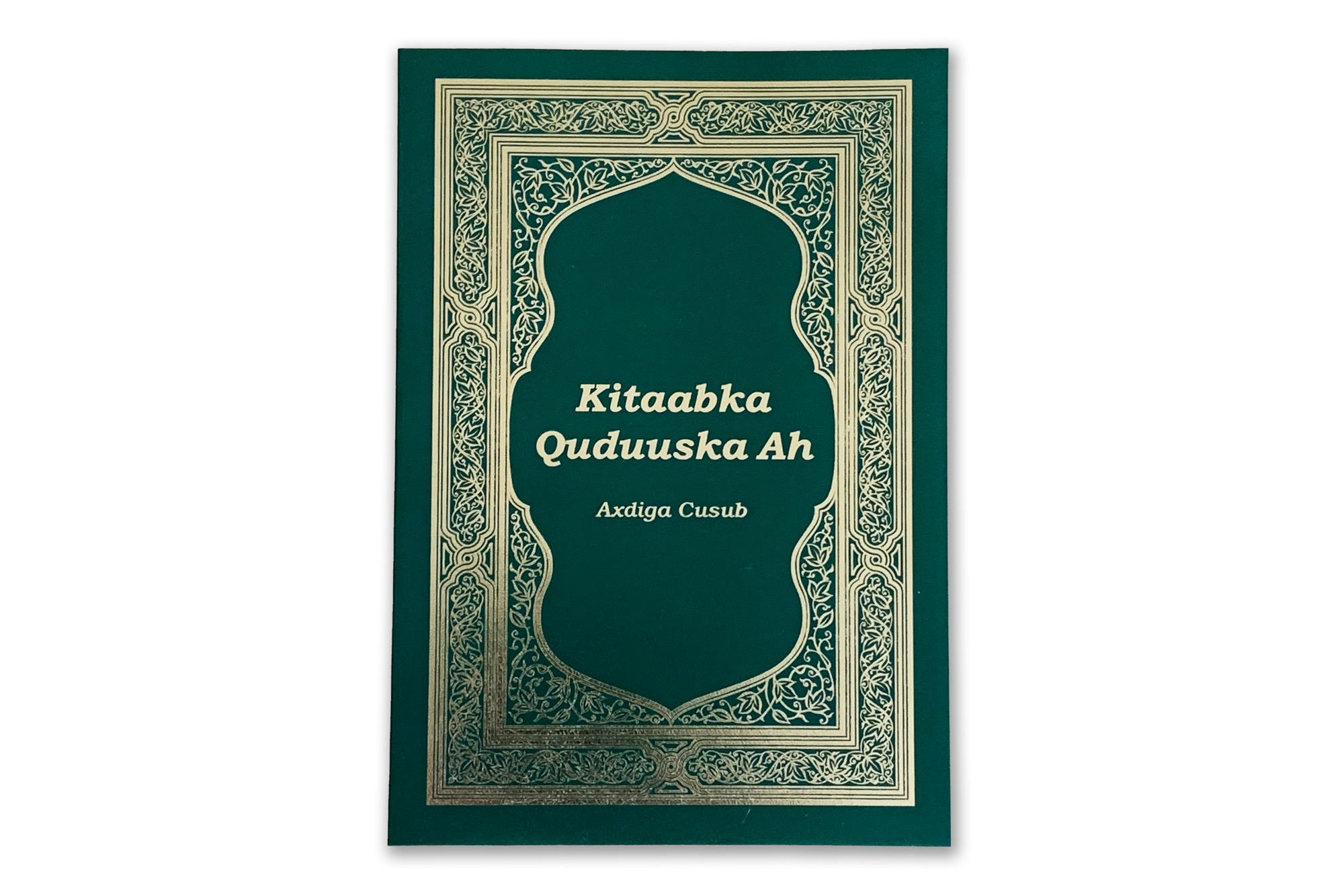New Testament in Somalia
NT
| Quantity | Unit price |
|---|---|
| To 2 |
€8.95*
|
| From 3 |
€6.95*
€8.95*
(22.35% saved)
|
| From 8 |
€5.95*
€8.95*
(33.52% saved)
|
| From 100 |
€4.95*
€8.95*
(44.69% saved)
|
| From 250 |
€3.95*
€8.95*
(55.87% saved)
|
| From 500 |
€3.20*
€8.95*
(64.25% saved)
|
| Order number | 179174000 |
|---|---|
| ISBN | 978-3-946919-74-2 |
Product information "New Testament in Somalia"
We offer you the New Testament in Somalia high quality printing.
The main language of Somalia is Somali (own name Af-ka Soomaali-ga) - an East Cushitic language from the branch of the Cushitic languages and thus part of the Afro-Asian language family - which is spoken by around 12 million people in Somalia and neighboring areas today. The language of the Somali people is also used by all minorities in Somalia.
Arabic and - as a legacy of colonial times - Italian and English are also used as commercial and educational languages. A small part of the Somali Bantu has retained the Bantu language Zigula. On the coast, small minorities (the Bajuni in and around Kismaayo and the Brawanese in Baraawe) speak dialects of Swahili.
As the only African state besides Tanzania, Somalia developed away from the use of European colonial languages after its independence. Somali nationalists strove for a standardization and writing of Somali. This was realized in 1972 under Siad Barre and made the official language. Somali quickly established itself in administration, education and the media, while Italian, English and Arabic lost their importance accordingly. The Maha Tiri (Maxaa Tiri) variant, mainly spoken in the north, served as the basis for standard Somali; the other main variant is Maay, which is widespread in the south, but there are also other dialects.
The Somali transitional constitution of 2004 establishes Somali (Maay and Maha Tiri) and Arabic as the official languages. Italian and English have secondary language status.
© Society for International Ministries, 2008
Published by
The Bible Society of Kenya
The main language of Somalia is Somali (own name Af-ka Soomaali-ga) - an East Cushitic language from the branch of the Cushitic languages and thus part of the Afro-Asian language family - which is spoken by around 12 million people in Somalia and neighboring areas today. The language of the Somali people is also used by all minorities in Somalia.
Arabic and - as a legacy of colonial times - Italian and English are also used as commercial and educational languages. A small part of the Somali Bantu has retained the Bantu language Zigula. On the coast, small minorities (the Bajuni in and around Kismaayo and the Brawanese in Baraawe) speak dialects of Swahili.
As the only African state besides Tanzania, Somalia developed away from the use of European colonial languages after its independence. Somali nationalists strove for a standardization and writing of Somali. This was realized in 1972 under Siad Barre and made the official language. Somali quickly established itself in administration, education and the media, while Italian, English and Arabic lost their importance accordingly. The Maha Tiri (Maxaa Tiri) variant, mainly spoken in the north, served as the basis for standard Somali; the other main variant is Maay, which is widespread in the south, but there are also other dialects.
The Somali transitional constitution of 2004 establishes Somali (Maay and Maha Tiri) and Arabic as the official languages. Italian and English have secondary language status.
© Society for International Ministries, 2008
Published by
The Bible Society of Kenya
| ISBN | 978-3-946919-74-2 |
|---|---|
| Edition | 2. Edition |
| Pages | 372 |
| Weight | 209 g |
| Dimensions | 13,2x19,0x1,0 cm |
| Bible translation: | The Bible Society of Kenya / Kitaabka Quduuska Ah |
| Book style: | Softcover |
| Language: | Somalia |
Login

